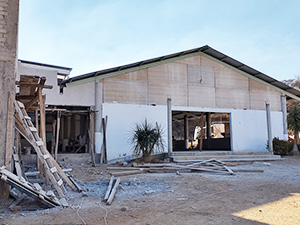Since 1979, Compassion has been working in Mexico to lift children out of poverty in Jesus’ name. Today, more than 59,000 children are benefiting from Compassion’s support and care at over 200 child development centers across the country. Every one of these children receives the nutrition, access to health care and educational support they need to overcome poverty and grow into fulfilled, self-sufficient adults.
Although the Mexican economy has experienced significant growth in recent years, around 42 percent of its 127 million people are still living in some form of poverty, and nine percent are living in extreme poverty, on less than $1.90 a day. The problem is particularly acute in rural areas, which suffered depopulation as Mexico transitioned from an agriculture-based economy to an industry-based one.
Mexico City is home to Neza-Chalco-Itza, one of the largest shanty towns in the world, with a population of 4 million. Drug abuse and crime are common here and in other slums that have developed near large cities. Gangs use violence and extortion to control their territories, and between 2013 and 2017, as high as 30-47 percent of homicides involved organized crime. Children in these areas are at risk of being drawn into gang culture and drug trafficking, which many young people see as their only route out of poverty.
Some 45 percent of the population has access to improved sanitation, but more than a quarter of rural families have no access to an improved sanitation facility, and eight percent do not have a reliable source of safe drinking water. This results in widespread waterborne illnesses, such as bacterial diarrhea and hepatitis A. Compassion is helping to tackle this problem through strategic WaSH projects that bring safe water and modern sanitation facilities to communities in need.
Primary and secondary education is free and compulsory in Mexico, but schools struggle to enroll vulnerable children. Indigenous children who speak a different dialect from their teacher often feel marginalized and choose not to participate. Although 90 percent of children attend primary school, just 62 percent progress to secondary school, and only 45 percent graduate with a high school diploma.
More than three million children between the ages of 5 and 14 are engaged in child labor, often in hospitality and agriculture, but also in dangerous occupations such as manufacturing and heavy construction. Indigenous children and the children of refugees are particularly vulnerable to human trafficking and sexual abuse.
Survival is crucial for infants in Mexico. For every 1,000 live births, 12 babies die. The maternal mortality rate is 38 deaths for every 100,000 live births. Around 12 percent of children suffer from stunting, while about 1.5 million children suffer from malnutrition. Around 98 percent of births have a skilled birth attendant present.
Compassion is striving to create the conditions in which every child in Mexico has access to a good education, in which every child is safe from waterborne illness and in which no child sees crime as their only way out of poverty. Our child development centers provide an essential base for these efforts. They are staffed by workers who are dedicated to improving children’s lives in Jesus’ name and to reaching out to those most in need.
Quick Facts
• Around 25 million people are living in poverty in Mexico, with nine percent living in extreme poverty.
• More than half of the workforce is involved in informal work.
• More than three million Mexican children are involved in child labor.
• Life expectancy in Mexico is 76.9 years.
• 95 percent of Mexican children ages 15 and older can read and write.
Sources: The World Bank; UNICEF; Human Rights Watch, The World Factbook.









